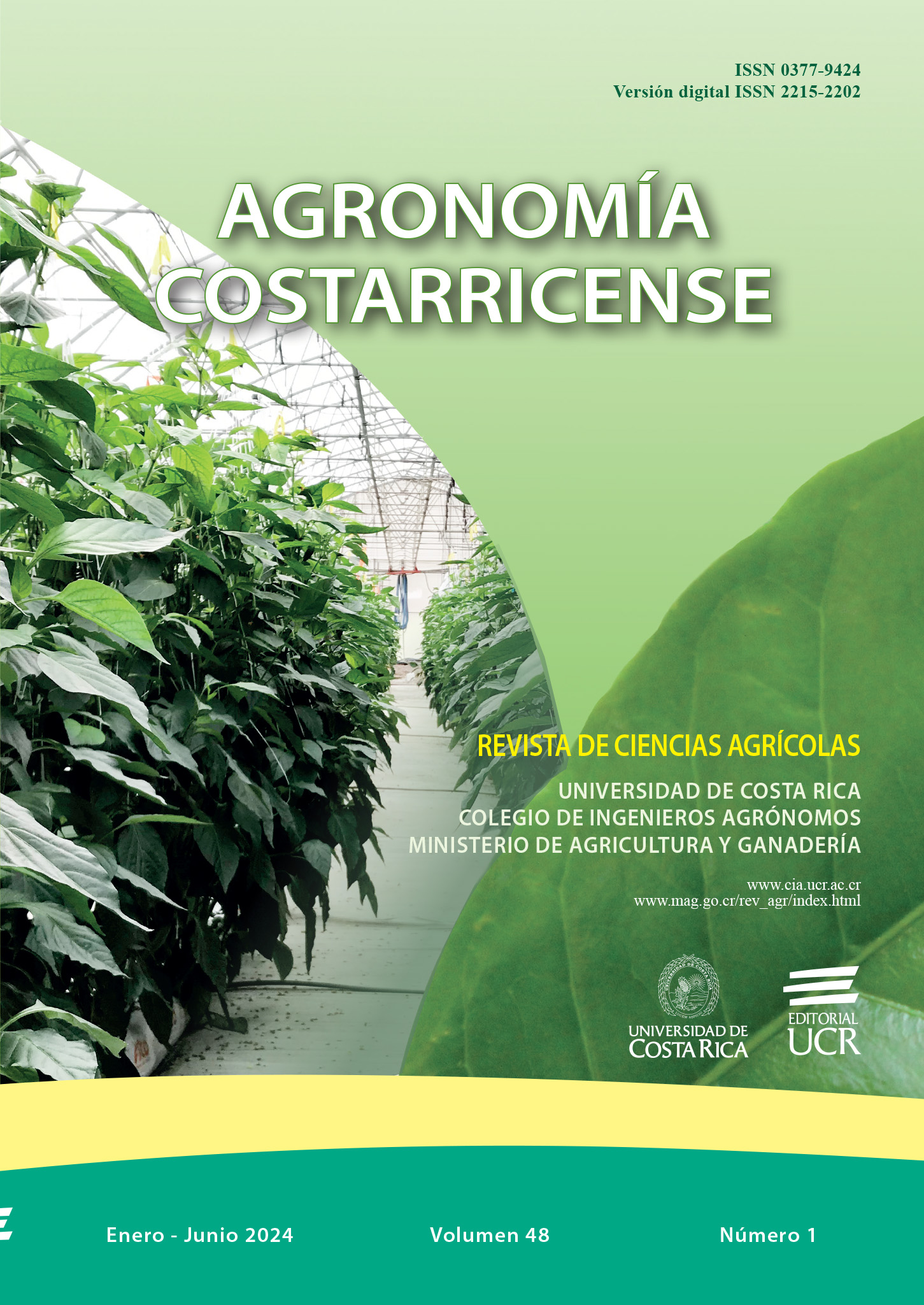Abstract
Introduction. Soybean establishes a symbiosis with Bradyrhizobium japonicum that allows it to fix atmospheric N. Coinoculation with other plant growth-promoting microorganisms can increase Biological Nitrogen Fixation (BNF) and plant growth. Objective. Determine if inoculation with P-solubilizing fungi (SP), Aspergillus flavus (S1) and Trichoderma longibrachiatum (S2), affects growth and BNF variables in soybeans. Materials and methods. In the greenhouse on an Andisol and an Ultisol, growth variables and BNF were evaluated in soybeans inoculated with B. japonicum and 2 SPs. Five treatments were evaluated: an absolute control (T), addition of phosphate rock (RF), addition of RF and inoculation with B. japonicum (BRF) and the addition of RF, B. japonicum and the 2 SPs independently (BRFS1 and BRFS2). An unrestricted randomized design with 4 repetitions was established and the data was analyzed according to normality, either with ANDEVA and DGC at 5% or Kruskal Wallis at 5%. Results. The responses obtained showed a positive effect on the evaluated variables when soybeans were inoculated with SP in addition with B. japonicum. The effect was a trend in Andisol, for the variables aerial fresh weight and number of nodules and their dry weight, while for Ultisol significance was found for these same variables, as well as for aerial dry weight, leaf area and N content and foliar P, with the greatest effect in BRFS2. In absolute terms, the highest P content in the soil microbial biomass and the highest SP population was found in the treatment with the presence of S2. The populations of N Fixers (NF) in the soil were higher for T and RF that did not have inoculation with B. japonicum. Conclusion. Inoculation with SP fungi can positively affect BNF, foliar N and P amounts as well as soybean plant growth.
Comments

This work is licensed under a Creative Commons Attribution-NonCommercial-NoDerivatives 4.0 International License.
Copyright (c) 2024 Agronomía Costarricense


